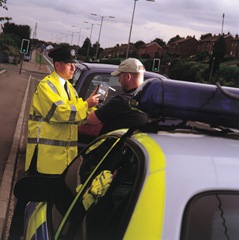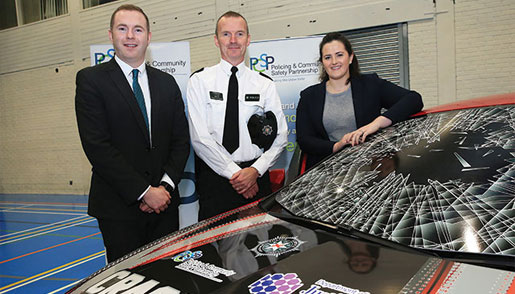Driving for safety
 ‘Driver error causes most crashes’ is the message as the province’s road safety strategy is updated.
‘Driver error causes most crashes’ is the message as the province’s road safety strategy is updated.
“It is fundamentally important that people get the message that driver error is the cause of most accidents,” said Environment Minister Edwin Poots as he announced a consultation on the new road safety strategy.
The draft 2010-2020 strategy includes 170 proposed action measures which cover: continuing to reduce the number of road deaths and serious injuries (specifically focusing on improving safety on rural roads); working to protect young drivers and motorcyclists; and reducing inappropriate and illegal road user behaviours (including speeding, drink and drug driving and careless and dangerous driving).
The 2002-2012 strategy included targets to reduce fatal and serious injuries by 33 per cent and child fatal and serious injuries by 50 per cent (based on the averages from 1996-2000). There was a downward trend in deaths and serious injuries from the 1996 to 2000 average of 1,748, to 1,097 in 2008. Based on averages from 2004 to 2008, the Minister explained that the new strategy’s targets would be:
• To reduce the number of people killed in road collisions by at least 40 per cent;
• To reduce the number of people seriously injured in road collisions by at least 45 per cent;
• To reduce the number of children (aged 0 to 15) killed or seriously injured in road collisions by at least 55 per cent; and
• To reduce the number of young people (aged 16 to 24) killed or seriously injured in road collisions by at least 55 per cent.
Northern Ireland would be the first part of the UK or the Republic to introduce a target specifically to reduce fatal or serious casualties in the 16 to 24 year old age group.
During an Assembly debate on the matter on 15 March, Poots pointed out that previous targets had already been met and the new targets are more challenging because the proposed actual percentage reductions are higher than before, and they are starting from reduced baselines.
The consultation, which ends on 16 June, will discuss whether local authorities should become more involved and whether wider involvement from stakeholders in planning and advising on the way ahead for road safety, is required.
Performance indicators could also be included for the first time. These would include:
• Measuring and reporting on the number of people who are killed in road collisions in rural areas;
• Novice driver casualties within six, 12 and 18 months of their passing their driving test;
• The number of car occupants killed who were not wearing a seat belt; and
• The rates of road users, including cyclists, pedestrians and
motorcyclists, killed or seriously injured for each million kilometres travelled.
Other plans include: graduated penalties for certain offences; a review of speed limits on rural roads; urban speed reduction initiatives; and the wider introduction of 20 mph limits in residential and urban areas where there are vulnerable road users.
Poots stated: “I remain very concerned about the unacceptably high number of young and novice drivers who are involved in fatal and serious collisions on our roads each year. We need to improve how we train and test drivers to ensure that they are safe and competent.”
In light of this, he will also begin a consultation on options for amending the existing 45 mph speed restriction on learner and restricted drivers and introducing a new system of graduated driver licensing to replace the R-driver scheme. This could include measures such as allowing learner drivers to drive on motorways and dual carriageways, night-time curfews, and increasing the duration of the current 12-month restricted period.
He concluded: “Every death and serious injury is one too many, and the only acceptable level of road accidents is none. I want the road safety strategy to drive society to do everything in its powe





